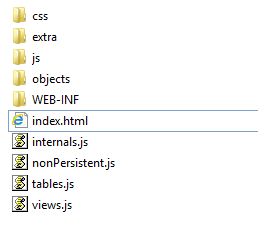Why learning the ERD document is important especially in Maximo
ERD diagrams are an important tool for designing, analyzing, communicating, and maintaining complex data models.
Hello everyone! In today's article, we'll be discussing ERD documents. It's worth noting that several years ago, awareness about ERD diagrams in Maximo wasn't as widespread as it is today. Hence, I thought I will consolidate some information for our subscribers (please subscribe if you haven’t).
An ERD (Entity-Relationship Diagram) is a visual representation of data models used to describe the relationships between different entities or objects in a system.
It is a type of diagram that uses standardized symbols to represent entities (such as people, objects, or concepts) and their relationships to each other. ERD diagrams are commonly used in software engineering and database design to visualize and communicate how data should be structured and organized in a system.
Source: Internet
In an ERD diagram, entities are represented as rectangles, and the relationships between them are represented by lines connecting the rectangles. The lines can have different symbols and annotations to indicate the nature of the relationship, such as one-to-one, one-to-many, or many-to-many. Attributes of entities are often displayed inside the rectangle, and primary keys are indicated by underlining the attribute.
Maximo Context:
As Maximo relies on relational databases, it's crucial for every Maximo developer to understand the Entity Relationship Diagrams (ERD) used in database design. Although these diagrams may not be readily available in Maximo's documentation, it's possible to generate one using the tools folder in Maximo, and IBM provides detailed documentation on this process. This is especially important for beginners in Maximo development who may need to analyze and modify the database structure.
How Maximo developers should benefit out of it:
Should use it to learn the relationships between objects.
Should use it to build effective relationships using Condition expressions and avoid pitfalls by writing poor conditions.
This will help to avoid duplicate relationships.
Will help to understand Primary and foreign keys.
There is a category called “Internal” which will help you to understand Maximo core objects.
Can learn about non-persistent objects.
Can use it during trainings to include it in their documentation.
Can be used to write better code and avoid data inconsistencies and avoid referral integrity violations.
Can be used to write more efficient SQL queries, design effective database indexes, and optimize database performance.
How to generate ERD Document for Maximo Out of the box objects:
\IBM\SMP\maximo\tools\maximo\erd
How to generate from Oracle SQL Developer: (Please exercise caution on this since the documentation varies from Oracle)
How to generate ERD in SQL Developer
Note: As keep exploring this option, I could not find the exact difference between generd.bat and generdwithlogical.bat - I will keep posted once I find the difference.
References:
IBM Community post abour ERD diagram
Some of the popular tools for creating ERD diagrams include (Source: Internet):
Microsoft Visio: This is a popular diagramming tool that allows you to create custom ERD diagrams using various pre-built templates and symbols. It also supports data linking, which allows you to link your diagrams to external data sources.
Lucidchart: This is a web-based diagramming tool that allows you to create custom ERD diagrams using a drag-and-drop interface. It also provides various pre-built templates and symbols to help you get started.
MySQL Workbench: This is a database design tool that includes an ERD diagramming feature. It allows you to create custom ERD diagrams by importing data from a database or by creating new entities and relationships manually.
ERDPlus: This is a free online tool that allows you to create custom ERD diagrams by selecting the appropriate symbols and connecting them with lines. It also provides various formatting options to help you customize the look and feel of your diagram.
These are just a few examples of the many tools available for creating custom ERD diagrams. The choice of tool will depend on your specific needs and preferences, as well as the complexity of your data model.
Thanks again for all your viewership and support. Any feedback or comments, please do not hesitate to share.
Cheers.
If you haven’t seen our collaboration video with Reliability Odyssey, please spare sometime and have a look at the video and share your experience.





